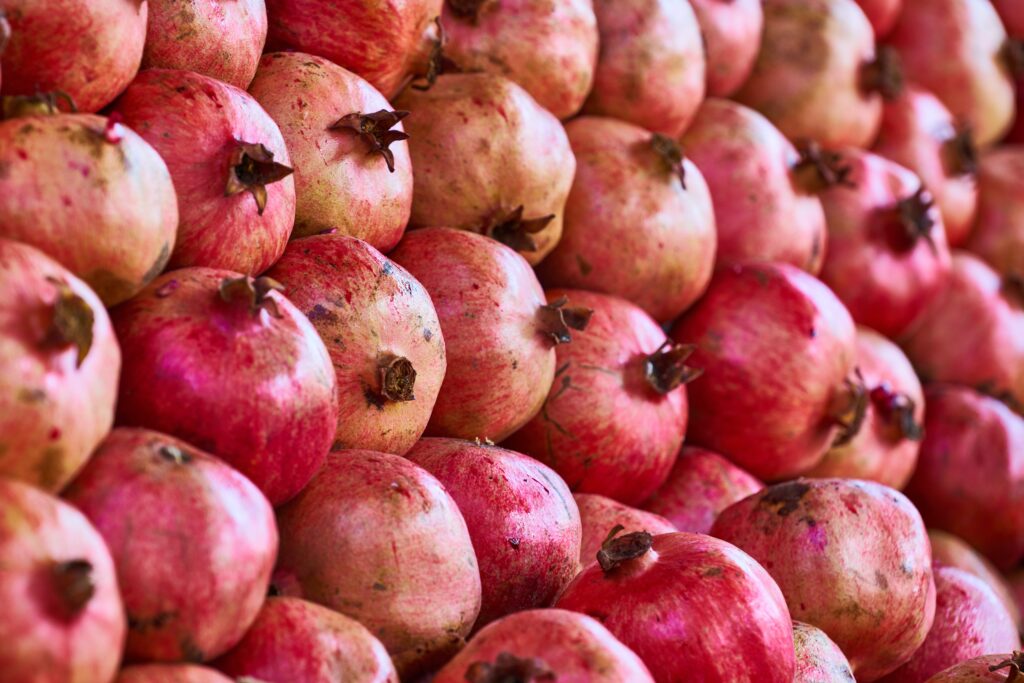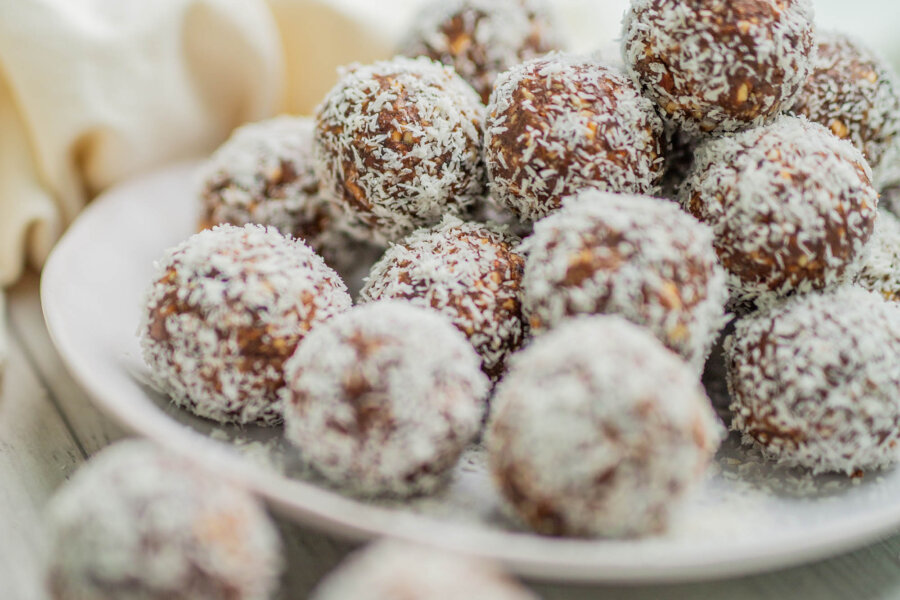I think it is about time I write an article about foods for low estrogen. Foods for low estrogen is the question I get asked the most out of all hormone-related questions people have asked me. But I have been reluctant to share this post because personally I do not believe eating these foods really has that much power in raising estrogen levels. They can be a wonderful addition to the diet and are all very healthful foods with many health benefits, but when it comes to raising low estrogen for women in reproductive years (not postmenopausal women) they can only help once the root cause of low estrogen is addressed. In most cases the root cause involves; not eating enough, exercising too much and excessive stress. Toxins eg, alcohol, drugs, medications environmental toxins also contribute to estrogen issues (low or high) and other hormonal imbalances can also throw off estrogen because all hormones work together. There are other causes as well like kidney disease, turner syndrome and low functioning pituitary, these conditions need to be addressed with a medical proffessional. Addressing these issues is what brings about real change, and only after these problems are rectified is it ok to lean on these foods for extra support. That is why I have written two or three articles on this matter before I wrote this one. I do not want anyone to think that these foods will miraculously raise their estrogen levels while they continue to undereat and overexercise for example. It just won’t work. You can find my previous articles here: https://hazelandcacao.com/how-i-raised-my-low-estrogen-levels-naturally/
https://hazelandcacao.com/how-i-learned-to-eat-enough-for-my-hormones-on-a-plant-based-diet/
Having said all that, once the root cause is addressed, there is quite a lot of evidence supporting different foods that can help with estrogen deficiency. Based on my research, The majority of evidence surrounds dietary fats, phytoestrogens, and micronutrients like zinc and calcium. These properties in plant foods can assist the body to make its own estrogen. It is important to note that plant foods do not contain real estrogen and can only work in collaboration with our body’s own natural processes. Real estrogen is found and consumed in animal products. This is because animals also produce their own estrogen. In fact, dairy contains about 60% of all the real estrogen consumed. Animal products and animal fats have been strongly linked to estrogen excess in women and men (and other hormone imbalances) and also linked to resulting diseases such as breast cancer. Interestingly although consuming animal products can raise estrogen levels, one study has found that it does not assist in reaching ovulation, the study stated that the risk of an anovulatory cycle (a menstrual cycle without ovulation) increases with increased dairy consumption. This was surprising to me as adequate levels of estrogen are needed in order to support ovulation. The cause of this is not understood, in my opinion, I believe it may be because the body will down-regulate its production of estrogen if it’s getting too much estrogen from an external source, which will affect other hormones too. These were some of the reasons I chose to go more plant-based in my attempt to balance my hormones and raise my estrogen. I wanted to produce my own estrogen and leaned on the foods (and lifestyle practices) that would help my body achieve it on its own. Although I am sure that some level of animal products in the diet would not be harmful (in fact animal products can be beneficial for some especially if the body has been starved) overall I believe the evidence leans towards a more plant-based diet for optimal fertility and estrogen levels.
There is a well-established correlation between high-fat diets and excess estrogen. That is why it stands to reason that women with low estrogen may be in need of more dietary fats in their diets. Similarily an adequate intake of complex carbohydrates is also needed for estrogen, this is because the act of ovulation (which is partly estrogen-driven) is very energy-intensive. Although there is not much evidence to support this (as far as I am aware) observationally many women that follow a very low carbohydrate diet like keto, Atkins or even strict paleo can cease to ovulate and lose their period despite adequate calorie intake.
Most of the literature supports the consumption of foods high in phytoestrogens to help raise estrogen levels. There are a few types of phytoestrogens, usually isoflavones and lectins as well as a few other lesser-known types (phytoestrogens are chemical compounds that are found in almost all plants, they have a very similar structure to estrogen and can weakly bind to estrogen receptors so can affect estrogen to some degree note: they are not real estrogen) There is also evidence that phytoestrogens can have anti-estrogenic effects, meaning they can lower estrogen if needed. By far the most researched food for estrogen has been soy because it is one of the highest sources of phytoestrogens. There is still a lot of controversy around soy consumption even though the bulk of the evidence is supportive of soy being a helpful food for estrogen as well as breast cancer prevention. Read my article about soy and women’s hormones here: https://hazelandcacao.com/is-soy-safe-for-womens-hormones/
Besides phytoestrogens, there is also evidence that food high in calcium and zinc is best utilized in the follicular phase (the first half of the menstrual cycle when estrogen is dominant) and evidence suggests that calcium deficiency is associated with low estrogen. These two minerals are very important for our menstrual health and I think a focus on these nutrients for estrogen, in particular, is warranted.
Here is my pick for the top foods for low estrogen:
Flax seeds: flax seeds are better studied than most foods for estrogen (besides soy) and are the only seeds that have been proven to help raise estrogen in women while also helping prevent against breast cancer. They have a very high level of lignans. More so than most other foods.
Sesame seeds: Sesame seeds are high in calcium which is an important nutrient needed in the follicular phase of the cycle. A study concluded that ground sesame seeds may affect estrogen levels in women, 50g a week improved estrogen and blood cholesterol as well.
Pumpkin seeds: Pumpkin seeds are one of the highest plant sources of zinc. Zinc is crucial to follicle development and healthy estrogen levels. Pumpkin seeds are also the highest plant source of tryptophan which is a precursor to the neurotransmitter serotonin. Estrogen and serotonin are strongly linked so one does benefit the other.
Soy foods, edamame, tofu & tempeh: Soy foods are known to be the highest known source of phytoestrogens and have been largely studied. They are the highest source of isoflavones
Dried fruits: fruits can actually be a high source of phytoestrogens. Nearly every website I have visited has listed dry fruits for their phytoestrogen content. The act of dehydrating the fruit and removing the water likely increases the phytoestrogen content. Fruits like dried apricots, dates, and prunes are very high in phytoestrogens.
Peaches: Peaches are a fruit particularly high in lignans (a type of phytoestrogen that is thought to be especially beneficial in estrogen production and affecting estrogen levels in the blood).
Berries: Berries are another fruit that can have high levels of phytoestrogens, they are also rich in antioxidants and also wonderful for our neurotransmitters to help out mood.
Cruciferous vegetables: Cruciferous vegetables are high in calcium which is crucial for estrogen but also contains a compound called DIM which helps the liver to metabolize estrogen properly. They also contain a few other lesser-known types of phytoestrogens that have been shown to have estrogenic effects on the body.
Pistachios: all nuts are beneficial for estrogen levels because they contain good amounts of dietary fats and protein, Pistachios, in particular, have the highest phytoestrogen content of all nuts.
Black beans: all legumes are good for hormone balance as they contain lignans. Lignans can help balance estrogen because they have both an estrogenic and anti-estrogenic effect. Black beans, in particular, are also a high source of zinc. Zinc is important in the estrogen-dominant phase of the cycle as it helps to develop follicles and improve egg quality.
Potatoes: There is nothing specific about potatoes that are linked to estrogen, however potatoes are a great source of complex carbs which is so important for adequate energy needed to reach ovulation and produce hormones. Potatoes are often recommended to women who have lost their period and their estrogen is low in order to help regain ovulation and periods.
Wholegrain rice: Similarily to potatoes, there is nothing specific about rice that helps with estrogen aside from the fact that it is a wonderful complex carb that can help provide much-needed energy to cells to help establish ovulation and adequate hormone production. Rice is another recommended food for women that have lost their periods and have low estrogen levels.
https://www.ncbi.nlm.nih.gov/m/pubmed/31710190/?i=38&from=phytoestrogens
https://www.ncbi.nlm.nih.gov/pubmed/31943053
https://www.ncbi.nlm.nih.gov/pubmed/11077239
https://www.ncbi.nlm.nih.gov/pmc/articles/PMC3074428/
https://www.ncbi.nlm.nih.gov/pmc/articles/PMC4129534/
https://www.ncbi.nlm.nih.gov/pmc/articles/PMC3276006/
https://www.ncbi.nlm.nih.gov/pubmed/17289903
https://www.ncbi.nlm.nih.gov/pmc/articles/PMC5808339/
https://www.ncbi.nlm.nih.gov/pubmed/10843440
https://www.ncbi.nlm.nih.gov/pmc/articles/PMC3288319/
https://www.ncbi.nlm.nih.gov/pubmed/16614415
https://www.ncbi.nlm.nih.gov/pubmed/16614415
https://www.ncbi.nlm.nih.gov/pmc/articles/PMC3196693/
https://www.ncbi.nlm.nih.gov/pubmed/30287729
https://www.ncbi.nlm.nih.gov/pubmed/10552547
https://www.ncbi.nlm.nih.gov/pmc/articles/PMC2781234/
https://www.ars.usda.gov/ARSUserFiles/80400525/Data/isoflav/Isoflav_R2-1.pdf










